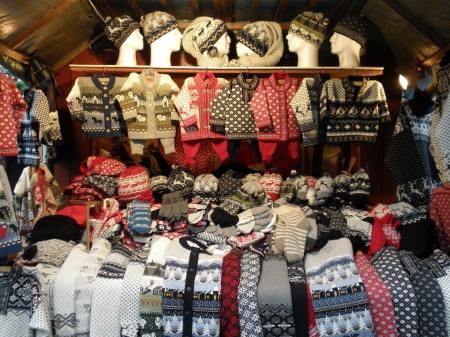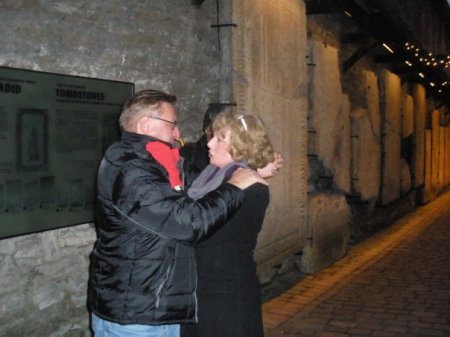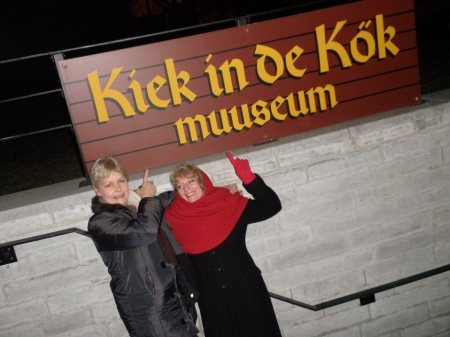The view from the bedroom window when we woke was a dreary and disappointing misty morning that obscured the view of the city buildings but we were planning to take a trip to Klagenfurt in Austria today so we hoped that the weather might improve along the way.
After breakfast we returned to the impressive train station that had a ticket office of cathedral sized proportions that made it seem more important than it really was and we queued and purchased tickets for a very reasonable €17 for the return trip. On the platform it was nice to watch the information boards that changed frequently with a rattle like the sound of falling dominoes and displaying intriguing and romantic destinations like Belgrade, Zagreb and Sarajevo as well as others more familiar to us like Venice, Vienna and Munich. We were catching a train to Villach, in Austria, where we would have to change for Klagenfurt.
The train arrived on time pulled by a tired looking blue and yellow electric engine that looked as though it had had a long working life and with carriages that were old but were comfortable and spacious and it pulled out of the station and began to efficiently pick up speed. First it went through the outskirts of the city on a similar route to that we had taken on the bus the day before and then it started to sway and got faster as it emerged into the open countryside. It was still very misty and the landscape looked bleak and uninviting and the backdrop of mountains, that we knew were there somewhere, were completely obscured from view.
What was interesting was the layout of the fields that seemed to be set out in an old-fashioned medieval strip farm system with some bits ploughed and some not, some lying fallow and some prepared for crops. This is because in the pre-independence period when Slovenia was a part of Yugoslavia, small independent farmers owned more than 90% of agricultural land and only about 10% was occupied by socially owned state farms known as agricultural enterprises. Since independence agricultural reforms in Slovenia have tried to encourage the development of agricultural holdings of a viable economic size but this is a slow process and about nine thousand small family farms are no bigger than about ten hectares of land and the importance of agriculture to the economy of the country is continuing to decline.
The train tracks followed the natural valley of the River Sava, which begins in the Julian Alps, which lay ahead of us and joins the Danube somewhere near Belgrade in Serbia and was previously the longest river in Yugoslavia. The river valley through which we were passing is the most industrialised part of Slovenia and consequently the river here is highly polluted with waste and I assumed that this is what accounted for its curious metallic sheen.
All of a sudden the mist dispersed and there were blue skies, cotton wool clouds and snow capped mountains on either side of us. The train stopped a couple of times at Kranj and Bled and then the last stop in Slovenia was Jesenice where we stranded for fifteen minutes while the Slovenian engine was exchanged for an Austrian replacement and the border guards came on board to check documents. No trouble on this occasion because unlike the last train journey into Austria from Slovakia to Vienna this time we had been careful to remember our passports. This wasn’t nearly so stressful but nowhere near as exciting either but on balance I do recommend having travel documents available to show to the men in black uniforms with loaded guns.
When the train got going again it began to climb into the Alps and after a short while it disappeared into a tunnel that took us under the mountains for a good few minutes and a considerable distance. When we went in on the Slovenian side the sun was shining and prospects looked good but we were disappointed to emerge on the Austrian side once more into mist and low cloud and that was the end of the good weather for the whole day.
The train stopped at Rosenbach where the border guards got off and then we continued on to Villach where we had time for a cup of coffee before catching the second train to Klagenfurt. Looking for the platform I found the escalators and seeing that the up channel was busy I decided to use the other set of steps that were stationary and so I assumed out of order. What I wasn’t to know was that this was an energy saving measure when not in use and as I started to ascend the machinery sprung into action in a downward direction and I had to run faster and faster up the steps to be able to make any progress. How embarrassing and it certainly drew the attention of the sensible people on the correct side of the escalator.
This was a much shorter journey of about forty kilometres and the train stayed close to the shores of Lake Worthersee through the narrow space between the lake and the mountains and we enjoyed good views of the water and the little towns and villages which cling to the side of the lake recovering from the previous tourist season and waiting for the next.
We arrived in Klagenfurt at the eastern end of the lake and walked the short distance into the city with high expectations of an excellent Austrian Christmas market.

























